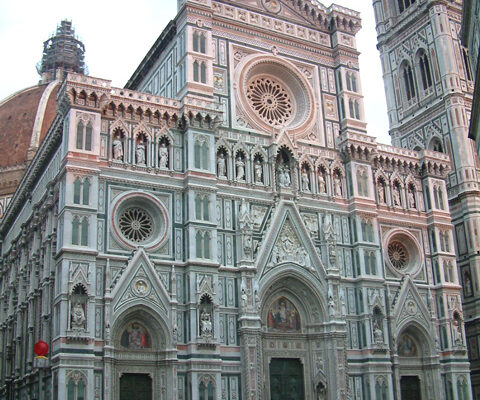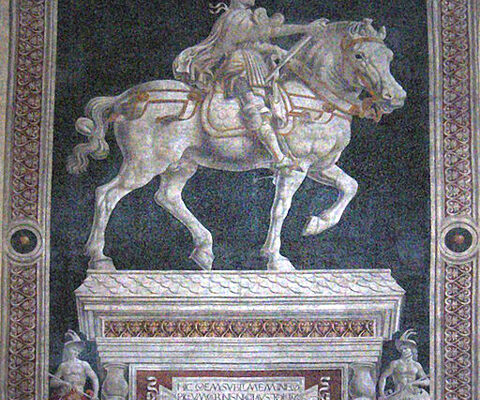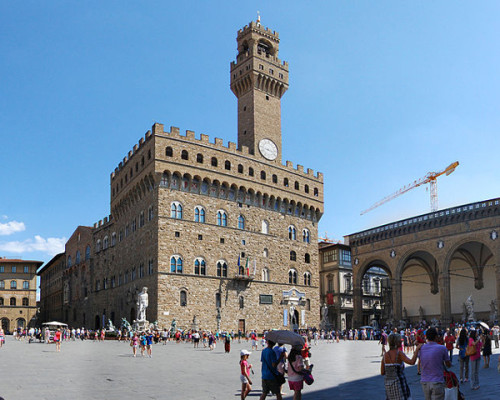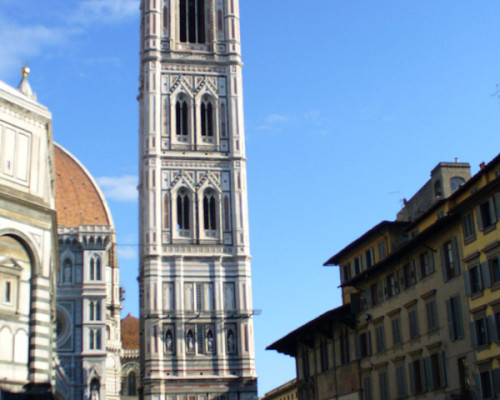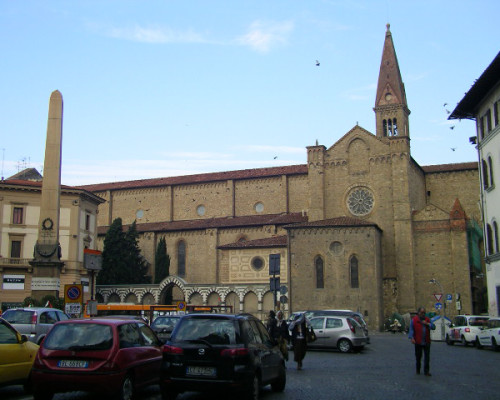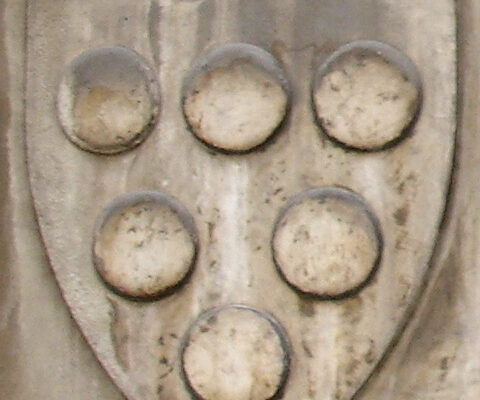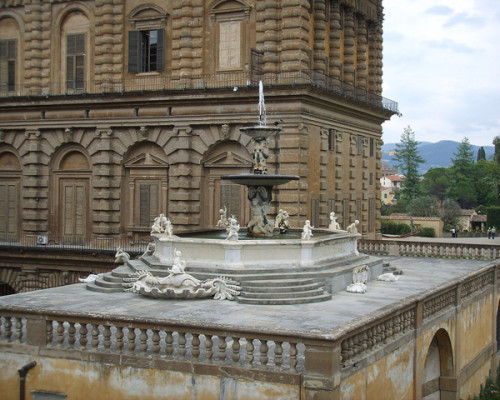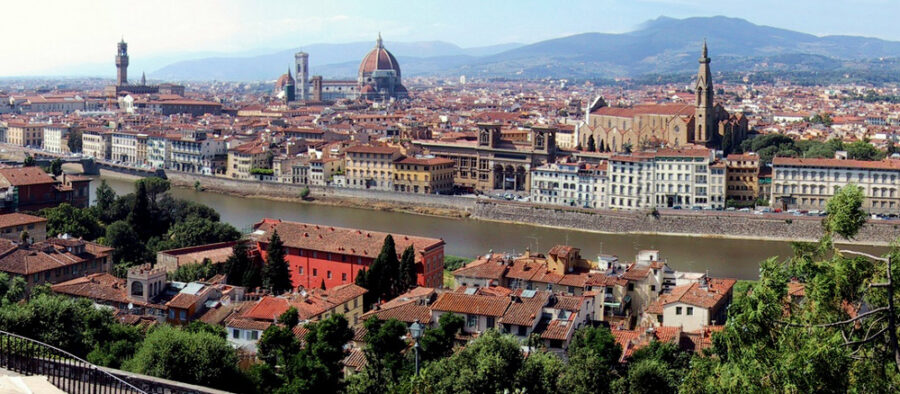
20 Dec Florence
Florence is the Renaissance capital of Italy and the center of Tuscany, located in the northern part of the country. The city has appr. 380,000 residents.
Florence was established in 80 BCE by the Roman Empire as a settlement for veteran soldiers. The city was economically and culturally one of the most important cities in Europe and the world from the 14th to 16th centuries, and it was the birthplace of the continental Renaissance. Florence is known for its churches and stunning architecture, featuring Neo-Classical and Baroque hues among the Renaissance entirety.
What to do and see in Florence
Duomo Santa Maria del Fiore
This beautiful Gothic cathedral, at the Piazza del Duomo, is the main church of Florence and a real eye-catcher in the skyline of the historic city. Its construction began in 1296 and it was completed in 1436. The cathedral complex includes the Baptistery and Giotto’s Campanile. These three buildings are part of the historic centre of Florence, which is a UNESCO World Heritage Site. Visiting hours
Piazza Signoria
This piazza is known for its many cozy cafés and Renaissance statues, including a copy of Michaelangelo’s David. On the one side of this square lies the Florence Town Hall, also known as Palazzo Vecchio.
Giotto’s Campanile
This Gothic bell tower stands adjacent to the Basilica of Santa Maria del Fiore and the Baptistry of St. John. The tower’s construction began in 1334 and it was completed in 1359. It is the work of three architect geniuses, Giotto di Bondone, Andrea Pisano and Francesco Talenti. The top, with a majestic view over Florence and the surrounding hills, can be reached by climbing 414 steps.
Santa Maria Novella
This charming Dominican church, close to the main railway station, is the first great basilica in Florence. The church´s founding stones were laid in 1279 and it was concecrated in 1420. It has 7 chapels, and its interior stained-glass windows are from the 14th and 15th century. Santa Maria Novella is famous for its magnificent frescos, such as 15th-century Madonna and Child by Filippino Lippi in the Filippo Strozzi Chapel.
Boboli Gardens
This park represents a mid-16th-century garden style, with nympheums and temples. The park is 11 acres wide and consists of an amphitheater, the Egyptian Boboli Obelisc, and several sculptures from the 16th, 17th and 18th centuries. Situated behind the Pitti Palace, the park is a part of one of the most idyllic districts in Italy.
Piazza del Duomo
The Piazza del Duomo square is unique and signifacntly different from others in the city. It lies in the historical center of Florence and is therefore in a central position. There are several famous tourist attractions along the square. The buildings have historical, religious, architectural, artistic and cultural value. These marvels include the Cathedral Santa Maria del Fiore, the Baptistery of St. John, the Bell Tower, the Cathedral Museum and a gallery built in Gothic style, Loggia del Bigallo. In addition to them, there are also several palaces, the Torrini Museum displaying works of goldsmiths and Opera di San Giovanni.
Piazzale Michelangelo
There are fascinating views over Florence from the Piazzale Michelangelo square, regardless of the time of day. The square was designed by the architect Giuseppe Poggi in 1869, as a part of the restructuring of the city walls. The square has been named after a monument dedicated to Michelangelo, displaying copies of his works. One of them is a bronze copy of the statue David. Poggi also designed a gallery for the works of Michelangelo, but the building was never used for this purpose. Currently the building houses the Ristorante la Loggia, with its coffee bar and a restaurant with a panoramic terrace. The square is immensely popular among tourists, and the area has a lot of vendors. After renovations were made in 2016, the beauty of the square, and the whole city of Florence, can be seen even more clearly.
Recreation
The Inferno Tour is inspired by Dan Brown’s novel Inferno. The thermic Impruneta Spa offers luxurious treatments.
Shopping
- Enoteca Mondovino (via S. Agostino 27-29) sells wine and liquor. Pitti Vintage – Italian & European Vintage Clothing & Accessories (Borgo degli Albizi 72r.) sells various kinds of neat and classy clothing. The San Lorenzo Markets, (via dell’Ariento) three streets north of the Duomo, is an affordable marketplace that offers many good souvenirs, scarves, clothes, bags, and decorations among many other peculiar things.
- You can find several stores that sell leather products in the city, like Piazza Santa Groce, Piazza Della Signore, Mercato Centrale and Loggia del Mercato Nuovo.
- Mercato Centrale is a brilliant shopping street with both outdoor and indoor markets. Besides popular Italian leather it sells wares like ceramics, clothes, notebooks and different souvenirs.
- Ponte Vecchio has traditionally been a place to buy gold, but nowadays you can find almost anything in addition to the classic jewelry.
- In Leccio, 20 kilometers south of Florence, you will find a fashion clothing store, The Mall. Another brilliant store, Berberino del Mugello Designer Outlet, is located 35 kilometers north of Florence.
Photos: With the CC licence / Asiir, Radomil, Zolli, Freepenguin, Sailko, Gryffindor
| Florencia, Italia | 5°C clear sky | |
Wind
0 m/s, NW
Humidity
91%
Pressure
768.82 mmHg | ||
Top 5 in Florence
- Shopping at the San Lorenzo Markets
- Duomo Santa Maria del Fiore
- Baptistry of St. John
- Impruneta Spa
- Palazzo Vecchio
How to get around in Florence
- The Firenze Card gives visitors access to about 30 museums and allows free use of the public transport system.
- The ATAF operates the city’s public transportation, and offers buses and trams. The journey planner and ticket prices are here.
How to get to Florence
- The Amerigo Vespucci international airport serves the region. A list of its airlines is over here.
- The city’s main railway station is the Firenze Santa Maria Novella. Trenitalia operates trains between Florence and the main Italian cities. The timetables and ticket prices for Trenitalia are here, and the same for other European train networks is here.
- Highway A-1 connects Florence to Bologna, Milan and the North.

